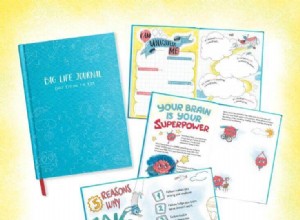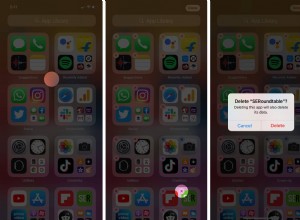لقد نشأت نصف فلبينية ( hapa ، كما نسميها) ؛ لا أعرف أي شيء سوى أن أكون محاطًا بثقافتين. بينما نشأت على نحو فعال في وايت في إحدى ضواحي أتلانتا ، كنت أتعرض أحيانًا لجنسي الفلبيني من خلال الطعام والموسيقى وستة أسابيع في السنة في منزل جدتي.
لم أتعرض لمزيد من الثقافة لأنه لم تكن هناك أي ثقافة إلا داخل منزلي. نشأت والدتي في الغالب في تكساس ، وليس في الفلبين. كانت الثقافة السائدة في منزلنا جنوبية. وكنت أنا وأختي اثنين من حفنة من الطلاب الفلبينيين أو نصفهم من الطلاب الفلبينيين في مدرستنا الثانوية الكبيرة جدًا.
مع تقدمي في السن ، هناك جزء مني يتوق إلى المزيد من الانغماس في جانبي الفلبيني. أريد أن أعرف كل شيء. كل وجبة خفيفة ، كل قول ، كل عادة. والأهم من ذلك ، أريد أن أنقله إلى ابنتي. على الرغم من أنها فقط ربع فلبينية ، إلا أنها لا تزال جزءًا من هويتها - وجزء من هويتي.
يعد تعليم أطفالك عن هويتهم العرقية أمرًا مهمًا لتطورهم وشعورهم بالذات. إذا كنت في علاقة متعددة الأعراق أو كنت جزءًا من عائلة متعددة الثقافات وترغب في إنجاب الأطفال ، ولكنك لا تعرف كيفية التعامل مع كونك متحيزًا ، فإليك ما تحتاج إلى معرفته.
لماذا من المهم التحدث مع الأطفال حول هويتهم
يقول أنجالي جودا فيرجسون ، حاصل على درجة الدكتوراه ، LCP ، أخصائي علم النفس السريري في مستشفى الأطفال في ريتشموند بجامعة فرجينيا كومنولث:"تعد الهوية العرقية ميزة مهمة للحفاظ على تراثنا وتوفير مكان للانتماء". الدكتورة فيرجسون من جنوب آسيا ، ومتزوجة من رجل أسود ، وأم لابن من أعراق مختلطة ، أسود وهندي. وتقول إن تربية طفلها المتحول إلى عرقي كانت تجربة مدهشة وأنها حسنت محادثاتها معه بمرور الوقت.
إنها تريد أن يختبر ابنها كلتا الثقافتين ، لذا فهي تضمن تمثيلهما بطرق متنوعة. إنها تريده أن يكون واثقًا من هويته - أظهر لها عملها مدى أهمية ذلك. يقول الدكتور فيرجسون:"قد تجعل الهوية ثنائية العرق الفرد في بعض الأحيان يشعر وكأنه لا ينتمي بالكامل إلى هوية واحدة. قد تسبب خطوط التنقل بين هويتين ضائقة." في كثير من الأحيان ، يعاني الأشخاص من أعراق متعددة من الاعتداءات الدقيقة والعنصرية ، والتي يمكن أن تنتشر عن طريق أفراد الأسرة وأفراد المجتمع ، وليس فقط الغرباء.
لقد استغرقت هويتها العرقية وقتًا طويلاً لتتطور ، كما تقول ، لأن العديد من الأطفال المهاجرين يشعرون بالضغط من أجل التثاقف أو الاندماج مع الهويات الغربية و / أو الأمريكية. نتيجة لذلك ، تحتل ثقافة المهاجرين المقعد الخلفي. "أتمنى أنه عندما كنت أكبر ، كان لدي المزيد من الفرص للمحادثات المفتوحة ... حول الصعوبات في التنقل في الهويات" ، تتابع. "أعتقد أن ذلك كان سيساعد في غرس الفخر بهويتي عاجلاً في الحياة."
إنها تريد أن يكون ابنها فخوراً بثقافته وأن يكون واضحاً في تعليمه كليهما على قدم المساواة. “We embrace intersectionality as our identity and really live in the ‘and’," Dr. Ferguson explains.
R. Christina Fenton, a registered clinical counselor based in Vancouver, B.C. agrees that it’s a delicate balance. “As children and adolescents are still developing a sense of themselves, it’s essential we help them transition in a way that does not see them reject either side of their heritage to fit in,” says Fenton. She is of Indo-Caribbean descent herself. When she immigrated to Canada as a child, she found herself disoriented—not only because of her mixed race but also because she was an immigrant. It added an extra layer of complexity.
These feelings are nuanced and complex, which is why it's important to help your child sort through them. Understanding the layers of their identity can help children feel more secure and confident.
How to Have a Conversation About Identity With Kids
Fenton says that she knows that parents feel ill-equipped to broach the topic of racial identity with their children. However, it's in the best interest of the child to start conversations early, particularly if a child looks more like one race than another. “It’s important to help them understand they are not devalued or a misfit if members of one group reject them for not being ‘whatever’ enough,” she says. “Start as early as possible and as often as possible; model racial harmony; and make a concerted effort to expose the children to healthy family members on both sides. Representation matters.”
تذكر؛ It’s never too early or too late to start the conversation, Dr. Ferguson says. Children as young as 4 to 6 months notice racial differences, often asking explicit questions about physical differences around ages 2 to 4. “You can build identity-promoting strategies in the home from birth onward,” she says.
She notes that you’ll most likely revisit these conversations several times over the course of their lives as they develop and or respond to current events. “Invite your child to ask questions about race and identity at any time or point in development in a nonjudgemental space,” says Dr. Ferguson. “Have conversations as often as you are able and as often as your child wants.” Here are tips by age to help promote biracial identity, according to Dr. Ferguson.
Kids Under Age 5
Dr. Ferguson suggests introducing kids this age to culture-focused content with strong or prideful lead characters. Look for books, toys, art, music, or movies that feature characters that match your child's identity. You can also explore hands-on activities, like making cultural crafts, singing cultural songs, or having family dance parties to cultural music. These are all concrete, daily practices you can encourage that incorporate cultures. “Let your child be part of the creation and celebration, and throughout each activity discuss why it is meaningful to your family and heritage,” she says.
Kids Age 5 to 12
This is the age range where strong role models with mirrored identities become very important. Dr. Ferguson suggests attending events that pertain to your mixed cultures. You can even expose your children to events from other cultures that are not part of your family's culture. “It helps foster appreciation for differences and celebrates diversity in identity,” she says.
We all know kids say what they think, and this is the age when they might ask questions about differing physical characteristics. Dr. Ferguson advises giving them the tools to talk with their peers about identity, such as dolls or action figures where they can role-play.
At this age, children might experience microaggressions and racism. Dr. Ferguson says it’s paramount to let your child express feelings openly and without judgment. "Open-ended questions like, 'When they said that about your skin, how did that make you feel?' can help start the conversation," she notes.
Pre-Teen and Teenage Kids
The difficult teenage experience can be compounded by race, which is further complicated by other intersectional identities such as sexuality, gender, and education. “It’s important we allow [teens] to decide and identify what their racial and cultural identity means to them as an individual," Dr. Ferguson explains. "This may be different from our own expectations and identities as a parent, and their identities might change frequently."
She suggests allowing your pre-teen and teen to apply what works best for them, even if it’s nontraditional or not what you would have done at their age. Continue to encourage discussions; provide access to books and media written by those who share a similar identity; and check in regarding microaggressions and racism, especially when world events bring them to the collective forefront.
“It’s likely they’ll be exposed to [potentially traumatic events] in some capacity," she says. "It’s important you create a safe space for them to process." Check in with your pre-teen and teen when these events occur, even if they do not directly represent your community of origin. “It helps continue to foster empathy and understanding of systemic inequalities," she says.
How to Foster Pride In Your Child’s Biracial Identity
Exposure is powerful when it comes to fostering pride in your child in regard to their biracial identity. Dr. Ferguson notes that continued exposure through movies, books, recipes, clothing, holidays, toys, and more will help. It doesn’t matter if it’s a small or a large element or event, so long as it’s intentional. Remember that each child is different and individual. You know your child best, so you’ll know what the best approach will be, Fenton says.
Both suggest having discussions about why your culture is important to you as a person. “Children love to embody what their parents model for them, and they learn best when you share your emotional connection or own memories to these traditions,” says Dr. Ferguson. She also recommends sharing your family’s culture and traditions with classmates. Giving your child the opportunity to show off their culture and help introduce it to others can instill a sense of pride.
Besides helping craft their racial identity, you’ll be helping them be better people. “Celebrating racial identity is a critical feature for promoting self-esteem and mental health in racially minoritized youth,” she says.
A Word From Verywell
Raising a child that is proud of their biracial identity will not be the result of a singular conversation. تأخذ وقت. Do your best to integrate these discussions into your child’s life from the beginning. Remember that you know your child best—find out how to best approach your child, and don't be afraid to adapt as they get older. It may be complex, but the result is an empathetic child who is proud of their identity and who can share their culture with others.






